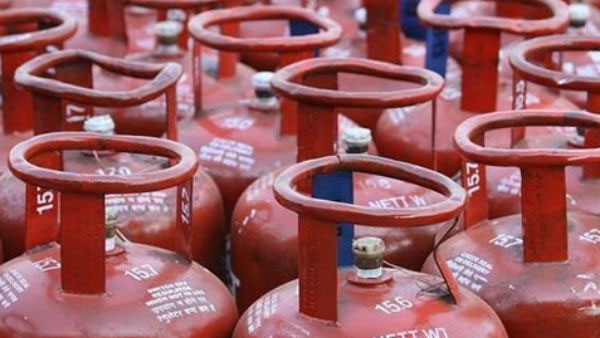The government’s decision to slash domestic cooking gas prices by Rs 200 per 14.2-kg cylinder and expand the Pradhan Mantri Ujjwala Yojana (PMUY) by adding 75 lakh poor households to its beneficiary base could cost upwards of Rs 37,000 crore on an annualised basis, an analysis of liquefied petroleum gas (LPG) consumer base and average gas refill data suggests. For the computations, it is assumed that the LPG cylinder refill rates will stay at the levels recorded for 2022-23 (FY23) and fuel retailers will continue to sell LPG to households at a price that is Rs 200 lower than what they would have charged for a cylinder had the price cut not been announced.
Read More: Aditya L1 Launch LIVE Updates: ISRO All Set! India’s First Solar Mission Less Than An Hr Away
On its part, the government has not provided any estimate of the cost of the twin decisions. Speaking on condition of anonymity, a senior official in the finance ministry said that the actual cost could be somewhat “lower” than this estimate as there are a number of variables in the equation. These include possible over recoveries on LPG sales by fuel retailers, movement in international crude and LPG prices going ahead, and currency fluctuations. The official, however, did not provide any estimation of what the actual cost might be.
The government on Tuesday announced the price cut, which was implemented by public sector oil marketing companies (OMCs) on Wednesday. While the government has so far not officially clarified whether or not it plans to foot the bill for this price reduction, which will benefit over 31 crore domestic LPG consumers in the country, the finance ministry official quoted above said that OMCs will bear the impact of the price cut. The official, however, clarified that the government will cover the Ujjwala subsidy of Rs 200 for the 75 lakh new beneficiaries, as is the case for existing beneficiaries under the scheme. For Ujjwala beneficiaries, the price cut is over and above the subsidy, which implies that they will get a cumulative relief of Rs 400 per cylinder.
Read More: Indian Railways’ first Swarna Jayanthi express: 26 Years of Glory! Routes, distances, and more
India has a total of 31.4 crore domestic LPG consumers, according to latest available data with the petroleum Planning & Analysis Cell (PPAC) of the oil ministry. Of the total consumer base, 9.6 crore are poor households under the Ujjwala scheme, which leaves the total non-Ujjwala consumer base at 21.8 crore. As per government data, the average LPG refill rate for Ujjwala beneficiaries was 3.71 cylinders for FY23 in terms of 14.2-kg cylinders, while for non-Ujjwala consumers, it was 6.65 cylinders. This takes the total domestic LPG consumption to 180.6 crore cylinders per annum, going by FY23 data. Assuming the Rs 200-per-cylinder cut stays in place for a year, the impact of the price reduction alone works out to Rs 36,117 crore. This means that if the government does not compensate the companies for price cut, which has been termed as its gift to the consumers, the cumulative annualised revenue forgone by the OMC would be over Rs 36,000 crore. Additionally, for the 75 lakh new connections that are set to be given under the Ujjwala scheme, the annualised cost of benefits is estimated to be Rs 1,113 crore, going by the average refill rate and the benefit of Rs 400–Rs 200 each on account of the price cut and government subsidy–per household. This takes the total cost of the two announcements to around Rs 37,230 crore for a year.
Read More: Nuclear Energy: Eye on Future, Can India Become G20’s Go-To Supplier?
An e-mail sent to the petroleum ministry seeking clarity on the cost estimates and whether the government is mulling compensating the OMCs later did not elicit a response till press time.
The government stopped providing LPG subsidy in the early months of the 2020-21 fiscal, when global oil and fuel prices had crashed. Later, subsidy was brought back, but only for poor households covered under the Ujjwala scheme. The government currently provides a subsidy of Rs 200 per cylinder to Ujjwala beneficiaries by way of direct bank transfers for up to 12 refills per year. Even as the government was not giving subsidy to non-Ujjwala consumers, it did provide a one-time grant of Rs 22,000 crore to the three OMCs last year to compensate them for selling LPG at a loss for the previous two years, which had resulted in accumulated losses of Rs 28,000 crore.
The grant came at a time when the OMCs were grappling with significant losses, particularly in the fuel retail segment. However, the companies have now largely recovered from last year’s losses and industry insiders do not expect the government to be as eager to help the companies through a special financial grant.
In interviews to television news channels following the decision, Petroleum Minister Hardeep Singh Puri alluded to the strong earnings performance of the OMCs in the April-June quarter as well as expectations of robust financial health in July-September as well, suggesting that the companies are well-positioned financially to absorb the impact of the LPG price cut. Puri reiterated his view that the OMCs have behaved as good and responsible corporate citizens by keeping fuel prices reasonable and affordable for the Indian consumer at a time when energy prices had shot up globally due to extreme volatility, partly fuelled by the war in Ukraine.





































